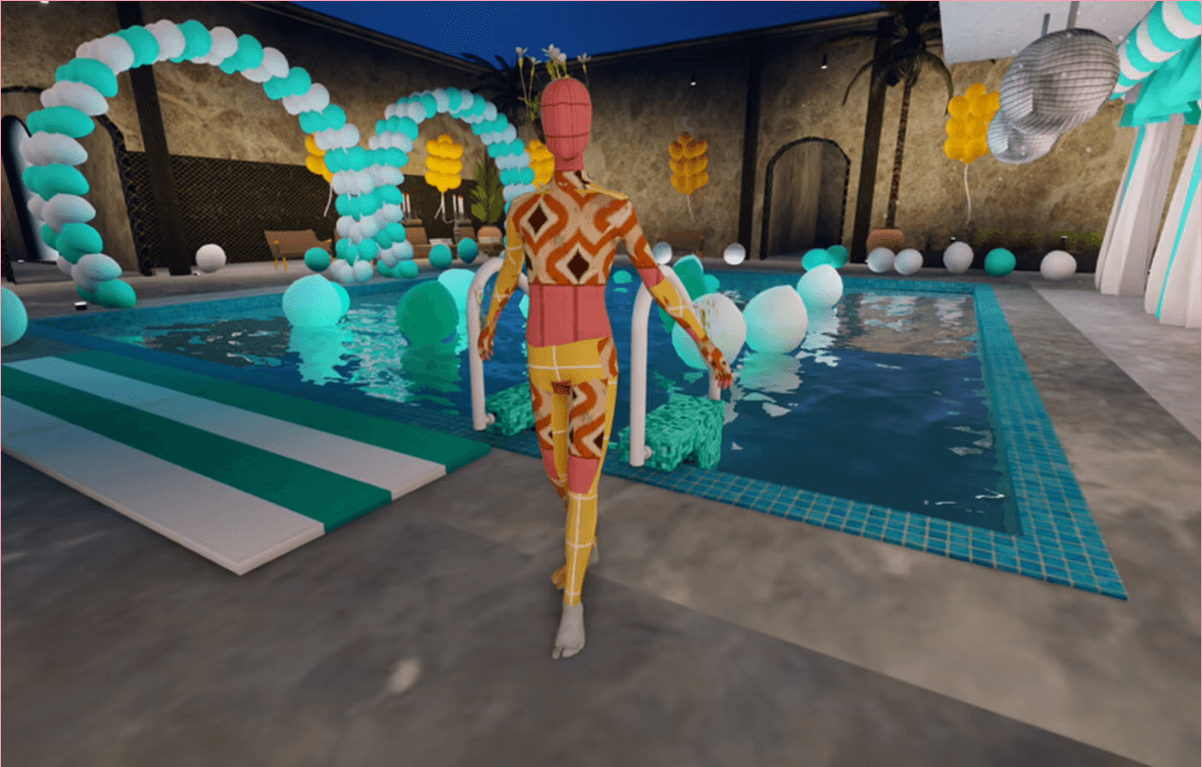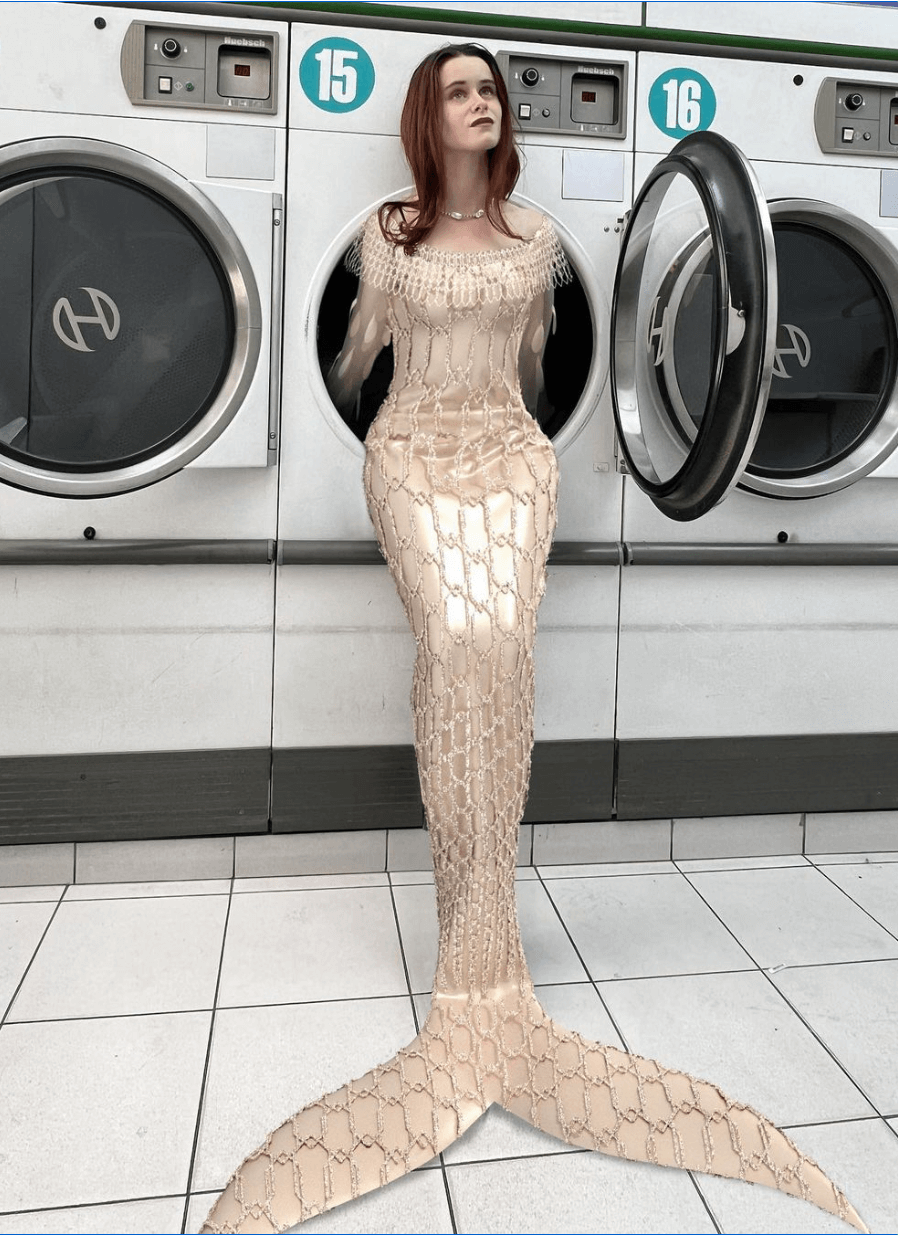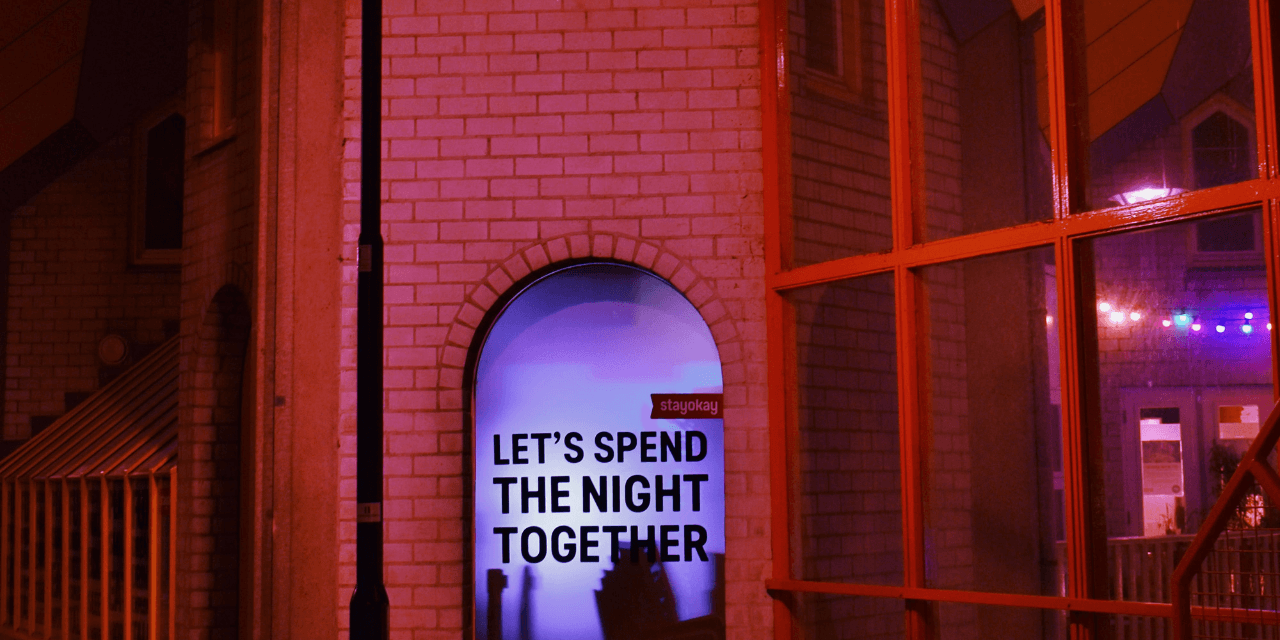Being the leading fashion influencer marketing agency in the Nordics means that we’re always on the lookout for trends and updates to cover everything you need to know about what is happening in the fashion landscape right now.
As our lives progress towards an even more digital future, the fashion industry is moving along on the journey and high end brands are leading the way.
Italian fashion power-brand Gucci recently teamed up with the online platform Roblox to build “Gucci Garden”, a Gucci-fied world inside the game which users could visit and purchase collections from for their avatars; another brand who entered the world of digital fashion is Burberry who recently partnered with Minecraft to create a similar concept.
At the beginning of 2022, the first ever digital fashion week came alive in the metaverse “Decentraland”, featuring over 70 known designers who showed their fashion collections that were completely digital and offered as NFTs for the purpose of being used in digital universes.
Today, platforms such as Roblox, Fortnite and Decentraland along with the wider metaverse have over 1 billion active daily users and the demand for digital fashion is growing massively. Keep reading to discover some of the biggest trends that are dictating which direction the fashion industry will be heading in, and learn how digital will play an essential part of a fashion brand’s identity in 2023 and beyond.

Image: Gucci
Dissecting the virtual reality
To understand the whole image of what is currently happening in the fashion landscape we need to define the terms that often come up in conversations around digital fashion.
Fashion and NFTs
First off, NFTs (or Non-Fungible Tokens as the abbreviated term stands for) play a major role in the revolution of digital fashion. Polarizing at their launch, NFTs were a hot debate and had investors split into two groups. Was this just another fad or were NFTs going to be the next big thing?
Essentially, NFTs can be described as a form of cryptocurrency and are often linked to digital art, fashion, domains, in-game avatars, digital collectibles etc. Because of their uniqueness and the scarcity that an NFT holds, they’re able to sell at premium prices.
Today, many fashion brands have jumped on the bandwagon and are using NFTs in their business practice. RTFKT, a metaverse shoe brand (now owned by Nike) had their NFT tie itself to a physical product that the customer who owned the NFT could redeem six weeks after the digital fashion product was launched. Most often, brands create collections of premium items, such as a rare sneaker, watch or a piece of jewelry, and turn them into an NFT. NFTs are also used for marketing purposes as they build hype around a show, fashion product or an art piece. Again, it’s the exclusivity and scarcity of an NFT that builds its value.
Fashion in Web3
Continuing through the dictionary of digital fashion, Web3 is a relatively new term that, for non-tech folks, could be described as the future of the internet, a space in which individual people will be able to own networks and websites and even browsers, things that are now mostly owned by the same large corporations. Often confused or mixed up with the metaverse, Web3 focuses on who will rule (tech giants or individuals) and govern the internet in the future, whereas the metaverse’s primary concern is how users will interact with it (the digital universe).
Web3 creates opportunities for smaller, independent designers and has potential to shake the industry’s hierarchy as it will return the power to the primary users of the internet. In theory, it will be easier for individuals to breakthrough as a metaverse designer, compared to how it is in the real world, as it’s only creativity that sets the limitations. We’ve seen examples of digital-only brands that are getting their breakthroughs and earning market share just through their creative designs that the users love. One of these brands is Republiqe, the first digital-only fashion brand that’s now taken over the digital space. Within the first 6 months they had sold over 500 pieces and considering how new the digital space is, that number is noteworthy.
Ultimately, the plan with Web3 is to level the playing-field between individuals and the large corporations. As far as fashion goes and how it connects to Web3, it shows us that it will change the ways of how we look at living, working, playing and related to our theme, shopping.
Fashion in the Metaverse
Metaverse. The word sounds like it’s taken from a science fiction movie and honestly, this phenomenon might be our closest step towards living a sci-fi life. The word meta means “beyond” and verse (this should be a given) comes from “universe”.
Metaverse is a space where people hang out online and create their own virtual lives. In the metaverse, people can go to work and have real business meetings, picnics with their friends in the park and as previously mentioned, create their own avatars. For people who are frequent metaverse users, their avatar is a reflection of their inner self and a way of expressing who they are. Looking good and dressing your avatar in the latest fashion, coolest accessories and flaunting your exclusive items is just as important in the metaverse, as it is in real life.
The fact that stakeholders of the industry such as Balenciaga choose to partner up with Fortnite, Burberry with Minecraft and Gucci with Roblox shows us that this is not just another fad that will go away anytime soon, but rather puts a credibility stamp on digital fashion and informs the rest of the industry that this is worth investing in.
It’s important to factor in that these brands are taking valuable opportunities to meet new generations of customers, Gen Z and Alpha, where they are. They’re forming a relationship with younger shoppers at an early age, and allowing them to purchase clothes from their brands (albeit digital ones) at a much cheaper price. When they eventually enter adulthood and begin to enjoy their own purchasing power, chances are high these brands will be a natural go-to in real life as well as in the virtual world as they’ve formed a strong identity with the young consumer and built a relationship with them. These brands are embracing the fact that our world is changing and are changing along with it to create opportunities that never previously existed.
Phygital Fashion
Segueing into something else that’s never existed before, another major digital fashion trend is phygital fashion. Phygital fashion is a simple neologism of the words “physical” and “digital”, hence where digital fashion and the real world come to coexist.
At early stages, phygital was often used in reference to something that was partly taking place in real life and partly taking place virtually and became a big buzzword around the pandemic. As people stayed at home and fewer people could attend events, the demand for virtual gatherings grew. That’s when we started seeing a lot of hybrid versions of virtual/in real life events, fashion shows, panels, webinars take place. Today, when talking about phygital fashion it’s often used in that manner, but a lot of brands also use the word in situations of exploring how to play with incorporating virtual fashion into real life.
This Outfit Does Not Exist
For all of my social media fellows, do you sometimes wish you could just change out your outfit in a photo to something much cooler? Good news, now you can! There are now fashion designers who are exploring the possibilities with phygital fashion and they’re creating outfits and fashion pieces that are completely digital, but look as authentic as the real thing.

Image: @thisoutfitdoesnotexist.
As the designs get even more fashionable, authentic-looking and intricate, chances are high we’ll see them end up on profiles in our social media feeds. Instead of having to take time to go online to find an outfit, place the order, wait for the package to arrive, put the outfit together and go out and take pictures (which builds up to a lot of work for just one photo!) profiles will be able to just snap a picture of themselves and use the digital design that they’ve purchased and use in the photo instead.
The contradictions would be that phygital fashion is still very much in beta mode and that’s also one of the reasons to why we’re seeing a lot of metallics and shimmery fabrics in the designs as it’s easier to create light and reflections that make it look authentic and real. Therefore, it might not be an option yet for a lot of creators as they wouldn’t find anything they think fit their style and what their audience prefers to see.
The Future of (Digital) Fashion
When discussing the value of virtual fashion and figuring out how this will come to play out in the future, the questions are many. Some might still be skeptical towards it (especially those for whom the digital world isn’t already a natural part of their daily lives), as it’s not a natural part of their lives. However, for Gen Z-ers, Gen Alphas and the generations to come – it very much will be. So for brands who value innovation and thought leadership, now is the time to jump on the trend. Apart from discussing whether or not digital fashion is worth investing time and resources into, there’s another angle and this one gives extra points to digital.
How Can Digital Fashion Help Us Be More Sustainable
Let’s take a look at digital fashion from a sustainable point of view. The fashion industry as we know it now is the second most polluting industry in the world, using huge amounts of energy and resources for its cause. Producing a single pair of blue jeans requires around 7-10,000 liters of water and is responsible for almost 10% of the world’s CO2 emissions. The industry is not only flawed as far as environmental concerns go, other ethical matters that the world of fashion struggles with include low wages, child labour, animal cruelty and even health and safety risks.
A couple of years ago, over 1,100 people died in an accident at the Rana Plaza, a garment factory in Bangladesh, when the roof of the building collapsed. The factory’s manager had decided to expand the building in order to meet demands even though he was told it wouldn’t be safe and that the structure of the building wouldn’t be able to hold it. Unfortunately, the instructions he was given turned out to be true in the worst ways possible but the need to meet demand weighed heavier.
In recent years, a lot of awareness has been raised to the matter of sustainability and ethical fashion. Many brands have taken it upon themselves to develop methods for their business in order to reduce their environmental footprint, for example. However, most brands still make a huge impact as their business requires resources that are scarce. Therefore, when discussing digital fashion many people suggest that it’s where the future of sustainable fashion lies. Digital fashion does not cause nearly as much harm to the environment as there are no constraints on fabric, usage or design. It also serves the purpose of what many are demanding today: viewing new, inspiring, innovative designs on social media or for the purpose of wearing in digital universes.
Samuel Jordan, a leading Roblox digital fashion designer who has worked with Burberry and Elton John, shares his thoughts in an interview with Vogue, “If you truly value creating things that are beautiful that people wear and they express themselves, you should be open to doing that wherever that’s happening and more and more that’s happening digitally. This new space is only growing, and it’s going to continue to grow without you. At its core, fashion is about what is trending, and trends are generally set on the streets — even if they’re paved in pixels”.
Looking for more fashion updates? Tune into our podcast episode where we take a deep dive into what is happening in the fashion industry right now.


